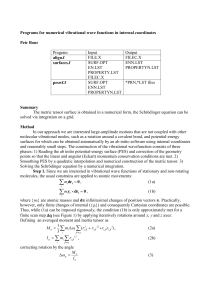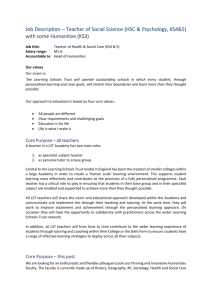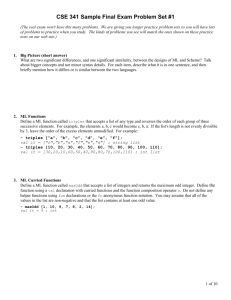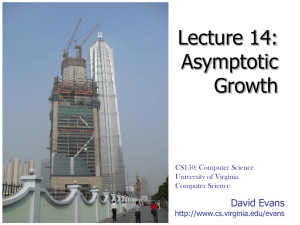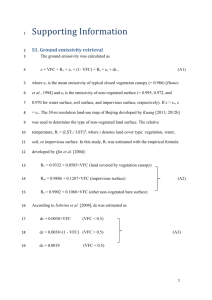906 STL Containers Chapter 31 31.4.1.3 vector and Arrays A vector
advertisement
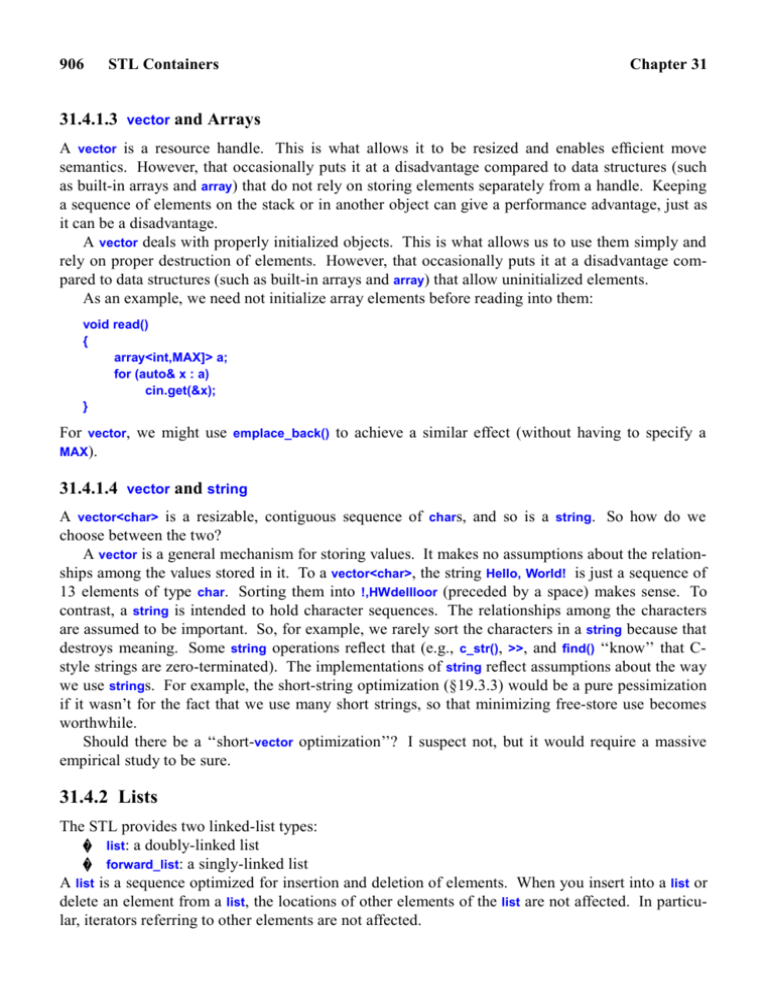
906
STL Containers
Chapter 31
31.4.1.3 vector and Arrays
A vector is a resource handle. This is what allows it to be resized and enables efficient move
semantics. However, that occasionally puts it at a disadvantage compared to data structures (such
as built-in arrays and array) that do not rely on storing elements separately from a handle. Keeping
a sequence of elements on the stack or in another object can give a performance advantage, just as
it can be a disadvantage.
A vector deals with properly initialized objects. This is what allows us to use them simply and
rely on proper destruction of elements. However, that occasionally puts it at a disadvantage compared to data structures (such as built-in arrays and array) that allow uninitialized elements.
As an example, we need not initialize array elements before reading into them:
void read()
{
array<int,MAX]> a;
for (auto& x : a)
cin.get(&x);
}
For vector, we might use emplace_back() to achieve a similar effect (without having to specify a
MAX).
31.4.1.4 vector and string
A vector<char> is a resizable, contiguous sequence of chars, and so is a string. So how do we
choose between the two?
A vector is a general mechanism for storing values. It makes no assumptions about the relationships among the values stored in it. To a vector<char>, the string Hello, World! is just a sequence of
13 elements of type char. Sorting them into !,HWdellloor (preceded by a space) makes sense. To
contrast, a string is intended to hold character sequences. The relationships among the characters
are assumed to be important. So, for example, we rarely sort the characters in a string because that
destroys meaning. Some string operations reflect that (e.g., c_str(), >>, and find() ‘‘know’’ that Cstyle strings are zero-terminated). The implementations of string reflect assumptions about the way
we use strings. For example, the short-string optimization (§19.3.3) would be a pure pessimization
if it wasn’t for the fact that we use many short strings, so that minimizing free-store use becomes
worthwhile.
Should there be a ‘‘short-vector optimization’’? I suspect not, but it would require a massive
empirical study to be sure.
31.4.2 Lists
The STL provides two linked-list types:
� list: a doubly-linked list
� forward_list: a singly-linked list
A list is a sequence optimized for insertion and deletion of elements. When you insert into a list or
delete an element from a list, the locations of other elements of the list are not affected. In particular, iterators referring to other elements are not affected.
Section 31.4.2
Lists
907
Compared to vector, subscripting could be painfully slow, so subscripting is not provided for
lists. If necessary, use advance() and similar operations to navigate lists (§33.1.4). A list can be traversed using iterators: list provides bidirectional iterators (§33.1.2) and forward_list provides forward iterators (hence the name of that type of list).
By default, list elements are individually allocated in memory and include predecessor and successor pointers (§11.2.2). Compared to a vector, a list uses more memory per element (usually at
least four words more per element), and traversals (iteration) are significantly slower because they
involve indirection through pointers rather than simple consecutive access.
A forward_list is a singly-linked list. Think of it as a data structure optimized for empty or very
short lists that you typically traverse starting from the beginning. For compactness, forward_list
doesn’t even provide a size(); an empty forward_list takes up just one word of memory. If you need
to know the number of elements of a forward_list, just count them. If there are enough elements to
make counting them expensive, maybe you should use a different container.
With the exception of subscripting, capacity management, and size() for forward_list, the STL
lists provide the member types and operations offered by vector (§31.4). In addition, list and forward_list provide specific list member functions:
Operations for Both list<T> and forward_list<T> (§iso.23.3.4.5, §iso.23.3.5.4)
lst.push_front(x)
lst.pop_front()
lst.emplace_front(args)
lst.remove(v)
lst.remove_if(f)
lst.unique()
lst.unique(f)
lst.merge(lst2)
lst.merge(lst2,f)
lst.sort()
lst.sort(f)
lst.reverse()
Add x to lst (using copy or move) before the first element
Remove the first element from lst
Add T{args} to lst before the first element
Remove all elements of lst with value v
Remove all elements of lst for which f(x)==true
Remove adjacent duplicate elements of lst
Remove adjacent duplicate elements of lst using f for equality
Merge the ordered lists lst and lst2 using < as the order;
lst2 is merged into lst and emptied in the process
Merge the ordered lists lst and lst2 using f as the order;
lst2 is merged into lst and emptied in the process
Sort lst using < as the order
Sort lst using f as the order
Reverse the order of the elements of lst; noexcept
As opposed to the general remove() and unique() algorithms (§32.5), the member algorithms really
do affect the size of a list. For example:
void use()
{
list<int> lst {2,3,2,3,5};
lst.remove(3);
lst.unique();
cout << lst.size() << '\n';
}
// lst is now {2,2,5}
// lst is now {2,5}
// writes 2
The merge() algorithm is stable; that is, equivalent elements keep their relative order.
